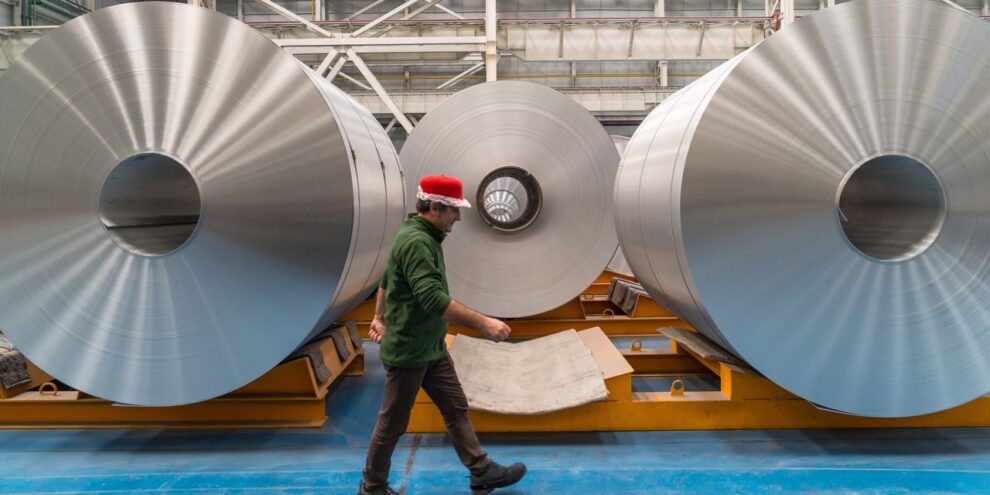
Last weekend marked the 20th anniversary of what was arguably the most strategically consequential event of the new millennium: the People’s Republic of China joining the World Trade Organization (WTO) with the assent of the U.S. and other advanced democracies.
Notwithstanding more access to cheaper consumer goods, there are many reasons for Americans to have “buyer’s remorse” two decades later. None more so than the widespread evisceration of U.S. heavy industries providing the materials and manufacturing needed for the critical functions of modern life: transportation, energy, infrastructure, and national defense.
“Clean product standards should cover all goods sold in the United States—and here is the key—requiring importers to follow the same standard as domestic producers. ”
This China-driven deindustrialization of our country is neither inevitable nor irreversible. Reinforced by the COVID-19 crisis, a bipartisan consensus recognizes that as a matter of national security, indeed survival, America cannot continue to depend so heavily on China for so many critical goods and materials.
Additionally, the heavy industrial sectors—steel, aluminum, chemicals, minerals, and more—are now located disproportionately in countries with weaker environmental and labor standards. They also emit a disproportionate share of greenhouse gases, which calls for a shift toward cleaner manufacturing with a lower carbon footprint—the kind more likely to be found in the U.S. and in other advanced democracies.
Revitalize heavy industry
This combination of factors provide an opportunity to re-shore and revitalize America’s heavy industry.
A recently published report “Stoking an Industrial Renaissance: Opportunities for U.S. Decision Makers” provides a number of public-policy options to spark and accelerate this process: by motivating industry to avoid establishing production abroad in countries (like China) with grievous pollution records and, correspondingly, to return more operations to the U.S.
“These measures would help to level the playing field against countries (led by China) who have enjoyed a competitive cost advantage based in large part on shoddy labor and environmental practices. ”
For example, goods manufactured here in the United States, according to a key analysis, are already 40% more carbon-efficient than the world average and three times more carbon efficient than China.
Imposing a carbon border adjustment mechanism (CBAM) could help level the playing field by requiring companies outside of the United States to either clean up their production processes or pay a fee based on the carbon intensity of their products, making domestic firms more cost competitive while disincentivizing companies from moving overseas to countries with lax environmental standards.
Clean product standards
Another option for U.S. decision makers is to develop a specific set of standards for manufactured goods or materials produced by the heavy industry sector. Already, such an approach exists for vehicles and appliances with fuel economy and efficiency standards (think of the labels on new cars or refrigerators).
A clean product standard (CPS) would create a technology-neutral, market-based standard that defines the maximum amount of emissions per unit of material produced. Producers could use any pathway they choose—whether it be clean energy, technological innovations, or even carbon capture systems—to meet the standard.
A CPS should cover all goods sold in the United States—and here is the key—requiring importers to follow the same standard as domestic producers.
The heavy-industry sector is generally capital intensive—requiring huge upfront investments—and produces low margins, so some level of government support is necessary at the outset. So the report includes supply-side levers such as capital investment tax credits, R&D subsidies, and incentive payments to expand domestic output—like the legislation working its way through Congress right now to bolster American semiconductors but covering other essential industries as well.
Hurdles to acceptance
Some of the options will be unfamiliar and, at first glance, off-putting to officeholders on both sides of the political divide. Republican traditionalists may blanch at government industrial policy motivating particular industries—or providing a green light to green-energy products like electrical vehicles. Progressives may gag at the prospect of boosting the bottom lines—and, with that, executive compensation—of heavy industrial firms or approving new domestic mining (to supply EV battery minerals).
In reality, most of the supply-side industrial policy options are already being employed by foreign governments to great affect against American companies and workers. These measures, combined with border adjustment and labeling provisions negotiated with our allies, collectively would help to level the playing field against countries (led by China) who have enjoyed a competitive cost advantage based in large part on shoddy labor and environmental practices.
Fortunately, mind-sets are already changing across the political spectrum from policy makers to producers to consumers. The combination of “Buy American” and “Buy Clean” are not only moral imperatives, but they also advance our national and economic security by helping to secure critical industrial supply chains and the good jobs and wages they provide. It will take multiple years to get there but the results over the next two decades will be worth celebrating.
Jeffrey Jeb Nadaner is executive director of SAFE Commanding Heights, an independent initiative dedicated to advancing critical supply chains for America’s transportation and energy needs.
More on revitalizing American industry
Broken supply chains are a market failure. What’s the right way to restore resilience?
From Barron’s: How to Fight and Win the Semiconductor War



